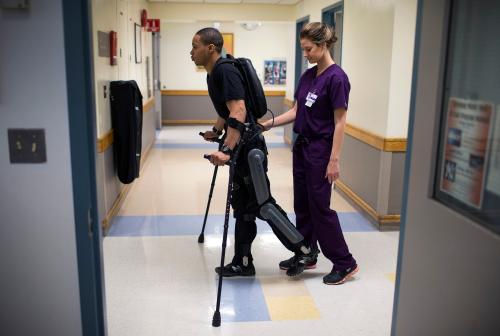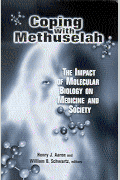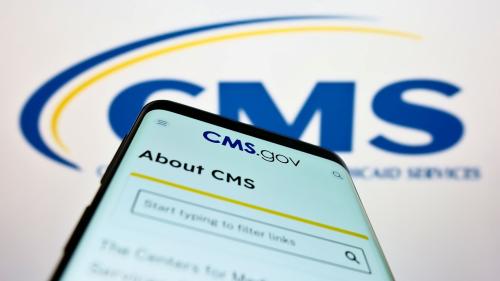What’s the latest in health policy research? The Essential Scan, produced by the USC-Brookings Schaeffer Initiative for Health Policy, aims to help keep you informed on the latest research and what it means for policymakers. If you’d like to receive the biweekly Essential Scan by email, you can sign up here.
Significant Savings and Better Consumer Choice Could Result from Reforming Bidding in Medicare Advantage
Study by: Steven M. Lieberman, Loren Adler, Erin Trish, Joseph Antos, John Bertko, and Paul B. Ginsburg
One third of Medicare beneficiaries enroll in private Medicare Advantage (MA) plans instead of traditional Medicare coverage. These MA plans receive a fixed monthly amount to provide coverage to beneficiaries, determined by the many complex rules and parameters under which plans submit bids. A new report proposes a reformed competitive bidding structure for MA, addressing three issues with the current system: inefficiently high plan bids due to poor bidding structure, poor consumer decisions due to a complex choice environment, and uneven subsidization of MA enrollees. The researchers propose a system that standardizes most MA insurance plans to facilitate competition based on price and quality and focuses the contracting and bidding process. The researchers argue that converting MA to a competitive bidding system offers an opportunity to make the program more efficient, enhance competition, and produce an estimated $10 billion in annual savings. Read the full report here and the corresponding Health Affairs blog post here.
Approval Process Shorter (and Less Strict) for Precision Medicines
Study by: Lisette Pregelj, Thomas J. Hwang, Damian C. Hine, Evan B. Siegel, Ross T. Barnard, Jonathan J. Darrow, and Aaron S. Kesselheim
Precision medicines are targeted at patients based on their genetic characteristics or the genetics of their disease-causing organisms. They have received growing clinical and scholarly attention over the last two decades, and have been viewed as a promising avenue for future therapies. A new study uses data from the FDA to examine the regulatory review and pivotal trial characteristics of precision medicines. Researchers found that from 2013-2017, precision medicines were developed and reviewed an average of 1.7 years faster than non-precision medicines. They were also approved based on fewer pivotal trials, which were less likely to be randomized, be double or single blinded, or use a placebo comparator, all characteristics associated with rigorous scientific methods. These trends may be beneficial for the development of precision medicines, but raise concerns regarding the sufficiency and quality of the evidence on which FDA approval is based. Full study here.
New Payment Strategy Could Help States Treat More Hepatitis C Patients While Encouraging Innovation
Study by: Neeraj Sood, Diane Ung, Anil Shankar, and Brian L. Strom
Though a cure for Hepatitis C has been available for years, many Medicaid patients are unable to access it due to the high cost to the states. A new policy brief suggests states employ a novel pricing strategy, leveraging their resources and influence in order to enter into a contract with a pharmaceutical company on a revenue-based contract rather than a price-per-pill basis. Under this proposed scheme, pharmaceutical companies would bid for the contract with the state. The state would offer a lump sum payment in return for a 100 percent rebate on drug purchases for the population designated to receive the cure, such as Medicaid patients or prisoners with Hepatitis C, over a negotiated timeframe. The authors argue this would significantly expand access to expensive Hepatitis C treatments without additional public expenditures while maintaining incentives to innovate. Read the full policy brief here. A corresponding perspective was published here.
Reduced Cost Sharing Disproportionately Benefits Low-Income Families
By: Anton Nilsson and Alexander Paul
Childhood health has been proven to have long-term impacts on both socioeconomic and health status as an adult. New research uses two policy changes in Sweden to examine the relationship between cost sharing in the form of copayments and child and adolescent healthcare utilization. Sweden has publicly funded universal health insurance, and employs cost-sharing in the form of copayments. In 1999, the country changed its age threshold, below which copays were not charged, from 20 to 7 years old, and then changed it back from 7 to 20 years old in 2002. This study found that eliminating copays increased children’s doctor visits by 5 to 10 percent for both children and adolescents. Low-income families responded more strongly to copayments, increasing their outpatient doctor visits approximately 22 percent in the absence of copayments. The authors conclude that a larger degree of income inequality would likely lead to even larger differences in responses across income levels. Full study here.
Medicare Bundled Payment Model Significantly Reduces Providers’ Per Patient Losses
Study by: L. Daniel Muldoon, Pamela M. Pelizzari, Kelsey A. Lang, Joe Vandigo, and Bruce S. Pyenson
One of the most popular alternatives to traditional fee-for-service (FFS) is the episode-based payment model, a value-based payment model where healthcare providers are given a single bundled payment meant to cover an entire clinical episode. Critics of episode-based payment models worry that the incentive structure created by such payment schemes will lead healthcare providers to avoid using expensive treatment options that would benefit their patients and lower total spending in a shortsighted attempt to cut costs. A new study analyzes the effectiveness of the “Oncology Care Model” (OCM), a payment model created by CMS to address these concerns by adjusting provider reimbursements to account for their use of expensive, novel treatments. The study uses Medicare data to simulate the effects of the OCM on six hypothetical practices and finds that participating in the OCM reduced their average loss per treatment episode by $758. As with many bundled payment models, the consequences for innovation over the long-term remain unclear. Full study here.













Commentary
The essential scan: Top findings in health policy research
May 17, 2018